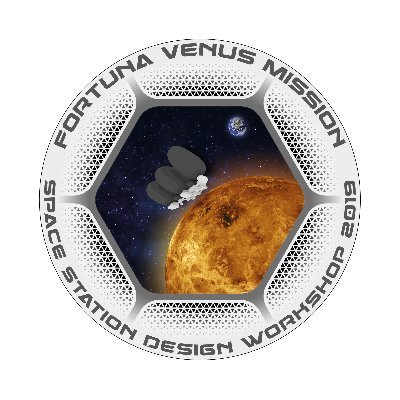Alexandria, Egypt AMSRO Chapter Member Wins Competition
- AMSRO

- Nov 23, 2019
- 3 min read

Hello AMSRO members! We have exciting news from Ahmed Baraka, the founding member of the AMSRO chapter at Alexandria University, Egypt. He recently participated in the Space Station Design Workshop (SSDW) 2019 at the Institute of Space Systems, University of Stuttgart, Germany, and his team won the competition! See below to learn more about the competition and to read Ahmed's account of the exciting day.
The objective of this year's SSDW was to survey and formulate a comprehensive study of a manned platform in the atmosphere of Venus. "The proposed concept shall enable extensive human and robotic exploration beyond the current frontiers by using an aerial basis that shall be able to explore Venus on a global level. Hence it shall provide an infrastructure to facilitate a crew of astronauts, to offer docking and launch capability for logistics as well as to conduct scientific operations. The scientific operations shall allow widening the knowledge on the formation and evolution of our Solar System, not only to better understand the world we live in but also to help us foreseeing future changes on earth itself. For cost effectiveness and maximal autonomy, ISRU shall be integrated in the concept as much as possible."
Here's Ahmed's account:
"I am Ahmed Baraka 22 years old. I am a senior clinical pharmacy student at Alexandria University, Egypt as well AMSRO member. I participated at SpaceUp Stuttgart 2019 in which I talked as a speaker about “Medicines in Space” for 20 minutes and at the Space Station Design Workshop SSDW from July 21st to 27th 2019 at the Institute for Space Systems IRS, University of Stuttgart, Germany. The SSDW is an annual workshop in which the IRS invites 40 experts from all over the world to participate in 7 days workshop to work together to conceptualize a human tended platform in space.
The forty experts were divided into two teams: Team Red and Team Blue, each team includes 20 members. My team was Team Red in which I was the Human Factors expert. In the first day, we received the mission statement “Survey and formulate a comprehensive study of a manned platform in the atmosphere of Venus. The proposed concept shall enable extensive human and robotic exploration beyond the current frontiers by using an aerial basis that shall be able to explore Venus on a global level. Hence it shall provide an infrastructure to facilitate a crew of astronauts, to offer docking and launch capability for logistics as well as to conduct scientific operations. The scientific operations shall allow widening the knowledge on the formation and evolution of our Solar System, not only to better understand the world we live in but also to help us foreseeing future changes on earth itself. For cost effectiveness and maximal autonomy, ISRU shall be integrated in the concept as much as possible”. After knowing the mission statement everyone in the hall was shocked (Venus) especially me as wondering about the tremendous challenges that we expect to face in this mission but after 7 days of hard work, discussions, calculations, presentations, meetings with supervisors we did it. My team “Team Red” won the competition as well as I won as a Human Factors subsystem.
After finishing the SSDW, I met a lot of experts and invited them -as a leader of our regional chapter at Alexandria University, Egypt- to participate at our coming event (Let’s talk about our future) in September 2019 and I managed to get the following experts as speakers at our event, Eng. Miquel Bosch Bruguera who is a research associate and the director of Soyuz Simulator at the IRS is going to send me a video about human mind adaptation in space, Eng. Manfred Ehresmann is going to talk about their PAPELL experiment on the ISS, Eng. Markus Grass is going to represent the SSDW and Mrs. Emma Barratt who is a cognitive scientist is going to send me a video about the neuroscience in space, as well as, I am still working with Prof. Dr. Reinhold Ewald to talk about his experience on Mir '92 mission."












































Comments